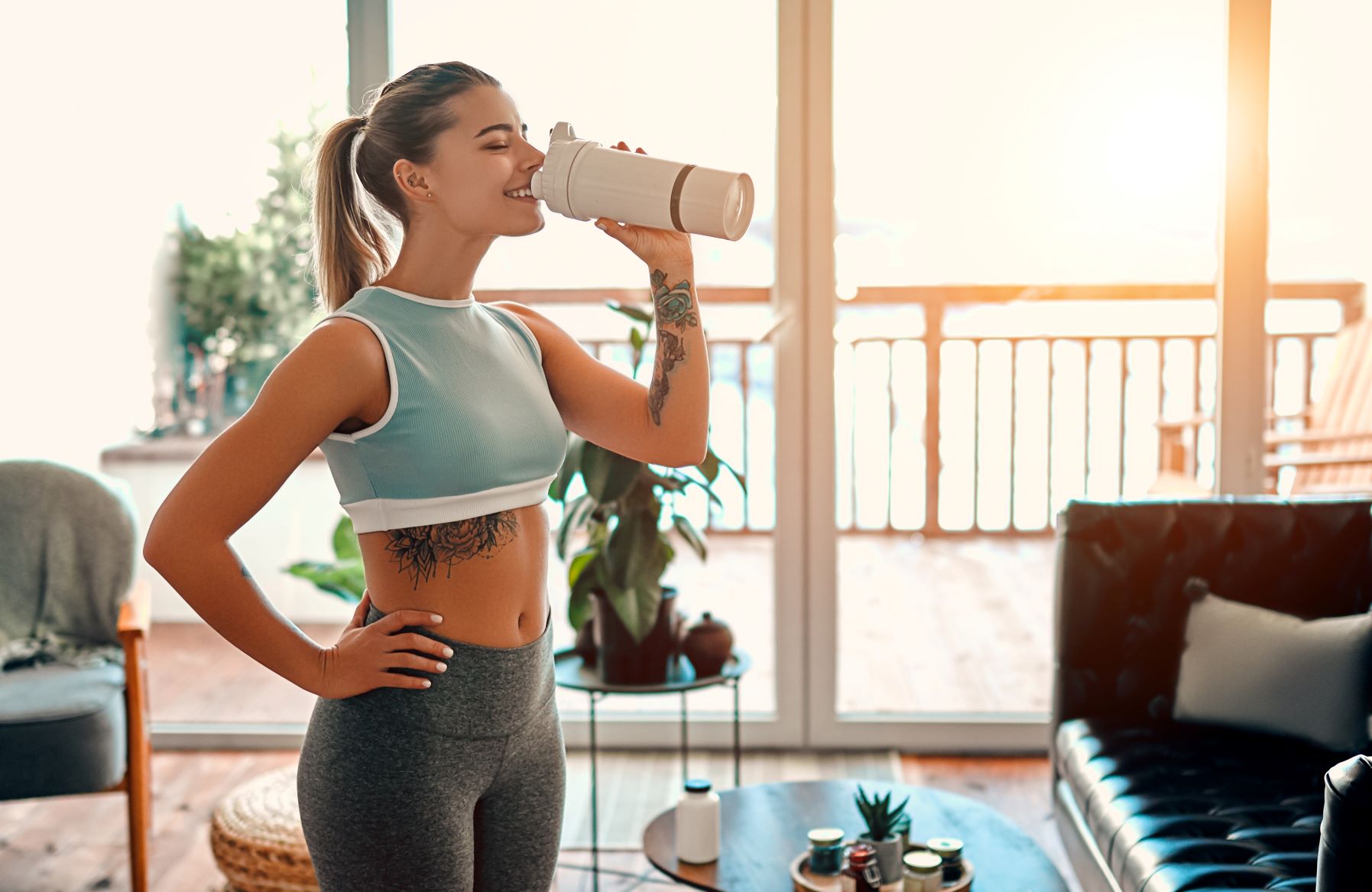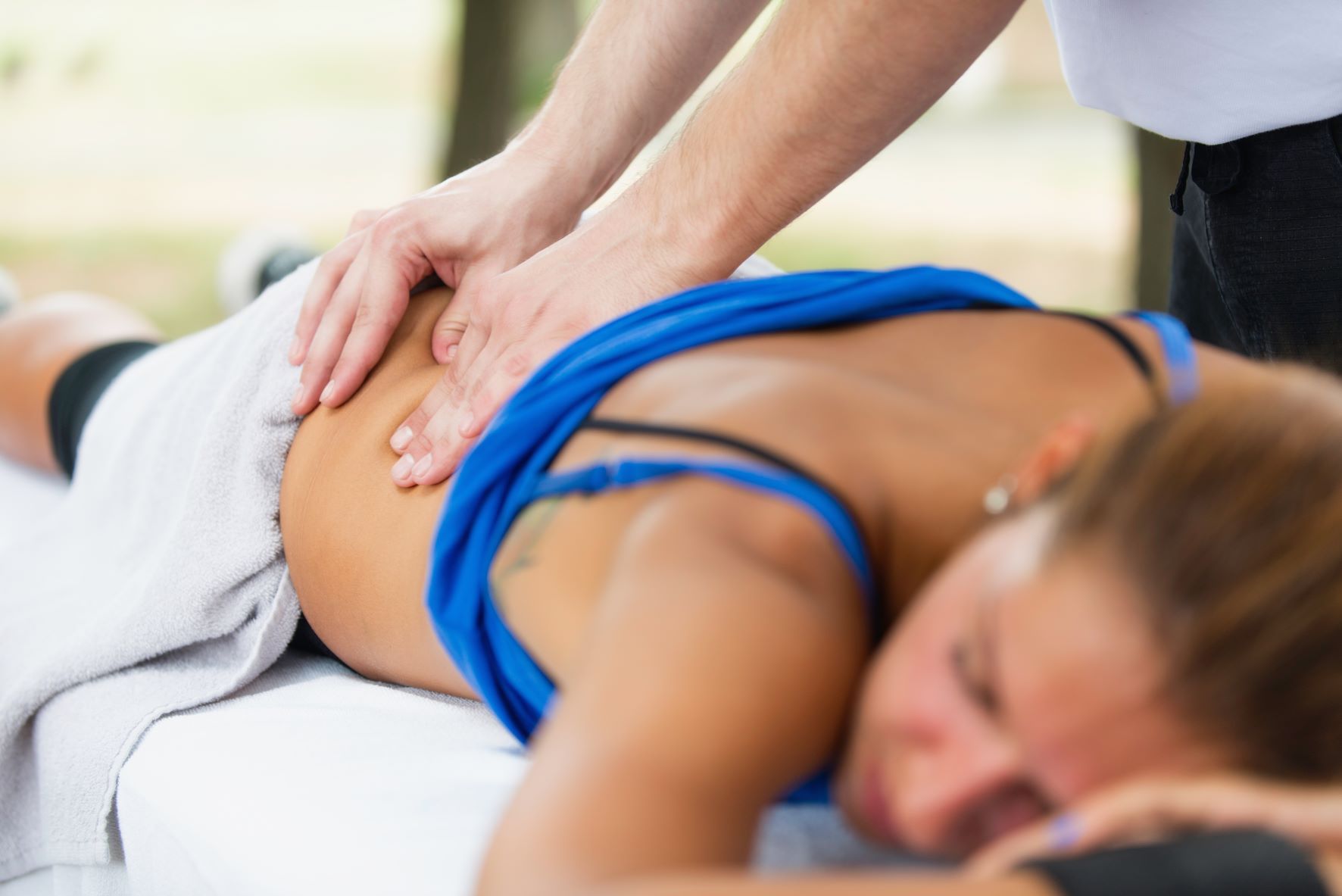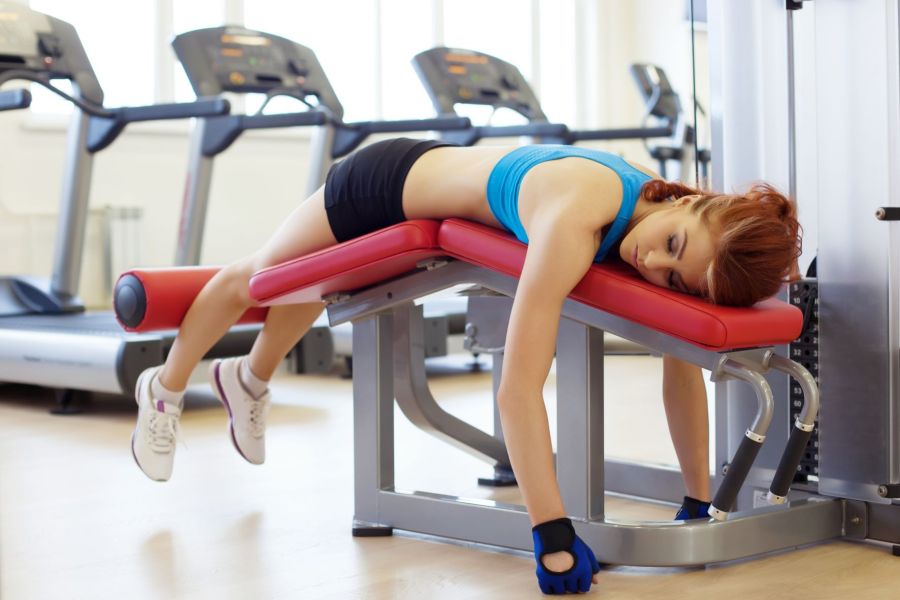Feeling worse for wear after your workout? You could be dealing with a fitness hangover – but fear not, modifying your go-to post-workout recovery methods could help to boost your exercise results…
Whether you’re new to fitness, or a seasoned gym-goer, you’re probably familiar with the pumped up feeling you get after you finish a workout. The endorphin rush that floods your body when you get moving helps to keep your mood in gear and your health on track. But if you don’t allow your body to recover fully after an intense workout, you can be left feeling worse for wear.
Without adequate recovery, your workout can leave you feeling fatigued with physical discomfort and exhaustion, brain fog, headaches and nausea. A new study shows that 29 per cent of exercisers felt so bad after a workout they ended up missing work, whilst 55 per cent admitted to feeling forced to stay indoors due to extreme soreness. Experts have dubbed this phenomenon ‘the fitness hangover’ which is essentially when your workout leaves you feeling worse off than before you exercised.
‘Recovery is important to side step any feelings of a fitness hangover. Recovery helps to prevent injury, reduce muscle soreness, rebuilds energy stores in the body and prevents the build up of toxins. It’s also important to have rest days to prevent overtraining (which can actually increase body fat and cortisol, and prevent restful sleep),’ explains Tara Lee Oakley, a personal trainer and Pilates teacher at East of Eden.
What causes a fitness hangover?
There are lots of reasons that exercise might not be giving you that pumped up feeling that you’re searching for. During exercise, glycogen stores in the muscles get used up, which can leave you feeling light headed. You’re also losing electrolytes through sweat, causing a drop in blood pressure which can bring on dizziness.
‘Hydration varies from person to person, so make sure you know what you body needs, and if you’re sweating, drink to replace the water you’ve lost. Furthermore, when you exercise, blood rushes to muscles and lungs, reducing blood flow to the digestive system. This can cause nausea and stomach pain,’ explains Lee Oakley. Here we show you the best ways to beat beat a fitness hangover, avoid unwanted symptoms and make sure you feel your best during your post-workout recovery period.

During exercise, glycogen stores in the muscles get used up, which can leave you feeling light headed. You’re also losing electrolytes through sweat, causing a drop in blood pressure which can bring on dizziness.
How to beat a fitness hangover
1. Listen to your body
It can be tempting to push through the pain barrier when you’re working out, and whilst getting out of breath during a HIIT class or feeling the burn when you’re lifting weights is pretty much part and parcel of a workout, be aware of pushing your body too far. If you’re overdoing it, you’ll probably get exercise symptoms like cramps, dizziness and physical sickness. These are all clues that your body is telling you to stop and rest, so don’t ignore the signs.
2. Refuel post workout to avoid a fitness hangover
Good nutrition is the cornerstone of any fitness routine, as eating well helps aid your recovery by fuelling your body with the nutrients it needs to repair muscle – and macronutrients should be top on your list of post-workout priorities.
‘Carbs are needed for glycogen synthesis and protein is needed for muscle repair. Fats are also needed for hormone production, as an energy source as well as for inflammation reduction. Those doing regular and high-intensity training should get at least 20 per cent of their calories from fat,’ shares Lee Oakley.
Try to eat within 45 minutes of your workout. A peanut butter and banana protein smoothie or an omelette with avocado on wholemeal toast are great options to nourish your body.
3. Prioritise self-care
Looking after yourself isn’t a luxury, it’s a necessity to avoid fitness burnout. Allocating 15 minutes after your gym workout to relax in the sauna, or having a warm bath, can help boost blood flow and muscle relaxation, whilst getting enough sleep will allow your cells to repair and renew properly.
Don’t forget to stretch after a fitness session – it’s as important as the workout itself. ’Stretching after your workout and on rest days will help to reduce stiffness and help with DOMS (delayed onset of muscle soreness),’ adds Lee Oakley. Child’s pose, knees-to-chest stretch and forward bends aid joint flexibility and keep you mobile.
4. Try an active recovery ‘workout’
Recovery doesn’t have to mean lying on the sofa all day. Gentle movement known as active recovery can also aid circulation, muscle recovery and energy levels in between workouts. However, you should ensure to listen to your body so that you don’t overdo it.
‘Active recovery can be used during a workout. For example, in a HIIT class you could take a light jog in between the high-energy movements. It can also be used immediately after a workout, like stretching in a cool down. Lastly, active recovery can be used on a rest day. Exercises like swimming or tai chi are useful as they’re gentle on the body,’ says Lee Oakley.
5. Try topical magnesium
Topical magnesium often goes under the radar as a great way to support muscle recovery. ‘Levels of magnesium drop rapidly during exercise, as it is an electrolyte used for muscle contraction and is lost when we sweat,’ says Emily Simpson, BetterYou new product development technologist.
‘Magnesium plays a key role in our body’s ability to produce adenosine triphosphate (ATP), so we need it to sustain energy. Lactic acid build-up can also be caused by low levels of cellular magnesium, which can lead to muscle soreness and cramping, plus magnesium supports getting a good night’s sleep.’ Try BetterYou Magnesium muscle spray (£13.95), with magnesium, lemon oil, arnica and capsicum stimulate blood flow and recovery.

Eating well helps aid your recovery by fuelling your body with the nutrients it needs to repair muscle. Try a homemade smoothie to nourish your body.
6. Wear recovery clothes
What could be easier than putting on a pair of leggings to power-up your recovery after a workout? Our editor swears by CEP Recovery Pro Tights (£114.95), which extend to the foot and use compression technology to boost circulation to hard-worked muscles (helping the body get rid of waste products and repairing muscles quicker).
‘Putting on a pair of compression socks, tights or leggings after a hard session is such an easy way to aid the recovery process,’ says Hayley Simmonds, of CAMS-Basso Bikes and Movistar e-team. ‘Go to any big sporting competition and you will see athletes walking around in compression clothing. Even if they aren’t sure why the tech works, experience tells them their muscles feel better as a result.’
7. Invest in recovery gadgets
You’ve probably tried a massage gun (a handheld device that sends targeted pulses of pressure to muscle tissue to ease aches and stiffness) but Arj Thiruchelvam, head coach at Performance Physique (performancephysique.co.uk), recommends investing in a PowerDot, a powerful electrical muscle stimulator from Therabody that uses neuromuscular electrical stimulation (NMES) and transcutaneous electrical nerve stimulation (TENS) to recharge recovery.
‘It gives different recovery modalities and can even integrate with Strava to help you understand what you’ve worked hard on,’ he says. ‘I use it with my athletes, whether they’re training hard or trying to rehabilitate a particular muscle. It’s not cheap but it’s worth every penny!’ Try the PowerDot 2.0 Uno (£175) from Therabody.
8. Stretch at your desk
‘If you’ve slotted in a workout around a busy working day, often it’s easy to skip a stretch so you can get to your inbox as soon as possible,’ says Nancy Best, PT and founder of Ladies Who Crunch. ‘A great solution is to carve out a five-minute mid-morning or afternoon break, using your chair as a stretching prop. You can do some brilliant shoulder extension and spinal rotation with zero faff, or try opening up your hips and glutes in an elevated pigeon.’ Try this:
- Stand and face the chair base.
- Bend your right knee into your chest and place it horizontally across the base of the chair. Your knee should be roughly in line with your foot.
- Your other leg should be extended behind you.
- Lean forward slightly if you want to intensify this stretch.
- Hold for 60 secs on each side.
9. Prioritise your hydration to avoid a fitness hangover
American rower and Hydrow athlete, Dani Hansen, makes rehydrating after intense exercise a priority to help optimise her recovery. ‘I always make sure to drink tons of water and electrolytes,’ she says. ‘I also drink tart cherry juice, which helps with recovery, after every workout — I’ve been doing that since college!’
10. Try infrared recovery tech
Infrared products – thermal products that encourage the vasodilation of blood vessels to boost blood flow and speed up the delivery of repair agents to tissues – are moving up the post-workout agenda. Indeed, GB Ironman triathlete Raya Hubbell swears by Kymira Infrared Compression Socks (£35), which use both infrared and muscular compression technology to boost performance and accelerate recovery.
‘It’s part of my post-training routine now: I finish training, stretch and cool down, grab a protein shake, shower and then immediately put on Kymira products,’ she says. ‘Whether it be leggings, sleepwear, socks or running sleeves, I am reliant on my Kymira wardrobe and have noticed a significant reduction in running-related pain and DOMS.’
11. Make your stretching time count
Use the five minutes you have for stretching wisely by working on the areas that feel restricted and prioritising the muscles you’ve just worked out. ‘Focusing directly on the muscles you’ve activated will help to increase blood flow to those muscle groups, which accelerates recovery and reduces any residual soreness,’ says stretch and mobility instructor Eloise Skinner.
‘If you did a lower body workout, target your glutes, quads, calves and hamstrings. For a post-run stretch, target hamstrings, hip flexors, calves and lower back.’ For stretches that offer more bang for your buck, Skinner recommends the pigeon pose (works hip flexors, hamstrings, lower back and inner thighs) and downward dog (works hamstrings, hips, shoulders, spine and calves).

If your struggle with fitness hangovers, treat yourself to a regular sports massage to help reduce pain and prevent injury.
Post-workout fitness recovery options for every budget:
Our top 3 post-workout recovery tips to avoid and beat a fitness hangover…
- £: Plunge under ice cold water for the last 15 seconds of your shower. This will help to flush away lactic acid and reduce inflammation.
- ££: Grab a foam roller to use for your cool-down session. It will help release muscle and fascia tightness.
- £££: Treat yourself to a regular sports massage to help reduce pain and prevent injury.
Related content:
- Post-workout nutrition: what to eat after exercising
- 8 ways to boost muscle recovery on rest days
- Recovery technology: 5 methods to try on rest day
Words: Louise Pyne & Sarah Sellens | Images: Shutterstock







